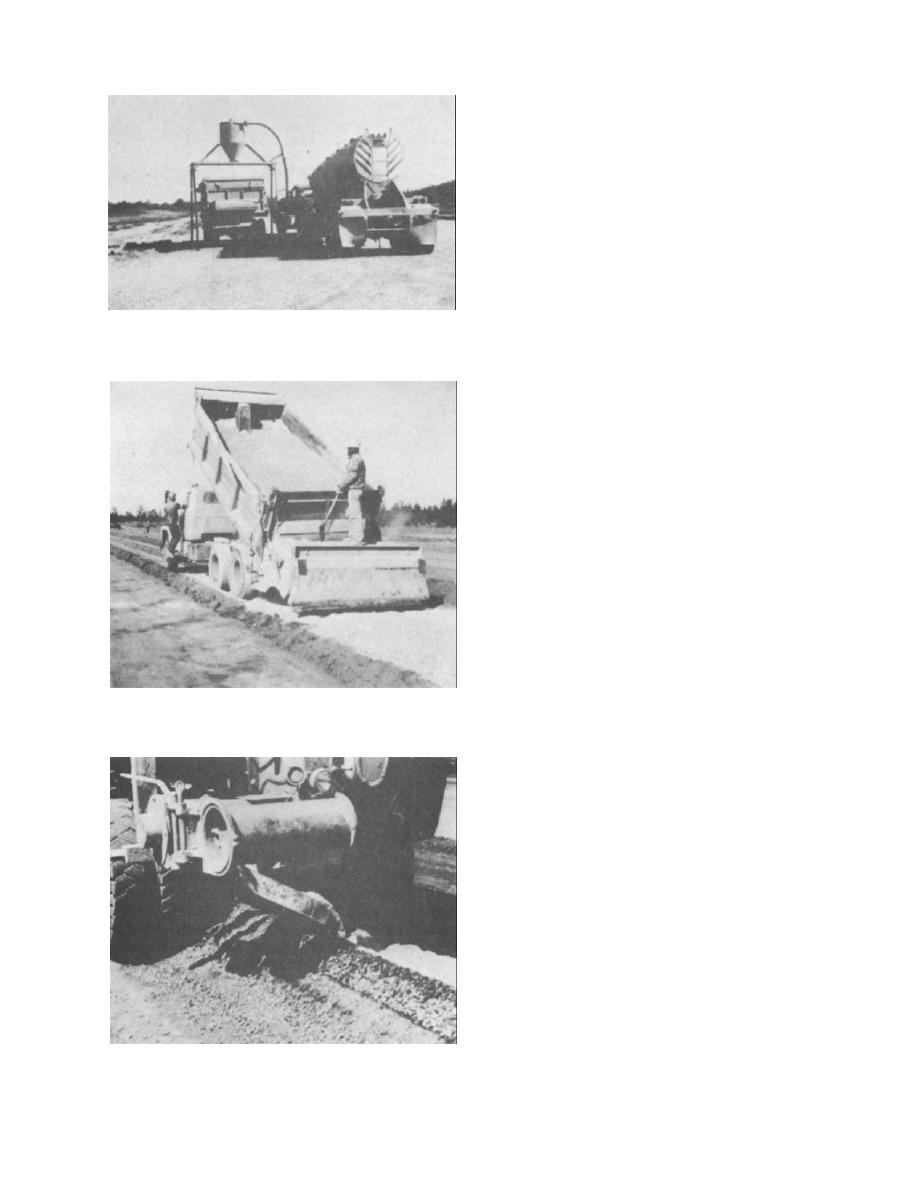
TM 5-822-14/AFJMAN 32-1019
which are most commonly used, require little or no
scarification or pulverization. Silty and clayey
soils may require extra effort to pulverize them,
particularly if they are too dry or too wet. Soils
that are difficult to pulverize when dry and brittle
can be broken down readily if water is added and
allowed to soak in; whereas, sticky soils can be
pulverized more easily when they have been dried
out a little. Most specifications require that the
soil material be pulverized sufficiently so that at
the time of compaction 100 percent of the soil-
cement mixture will pass a l-inch sieve and a
minimum of 80 percent will pass a No. 4 sieve,
Figure 4-7. Bulk portland cement being transferred
exclusive of any gravel or stone. Gravel or stone
pneumatically from a bulk transport truck to a job truck.
should be no more than 2-inches maximum size.
The final pulverization test should be made at the
conclusion of mixing operations. When borrow
material is specified, it should be distributed on an
accurately graded, well-compacted roadway in an
even layer or uniform windrow, depending on the
type of mixing equipment to be used. It should be
placed by weight or volume as required by the
specifications.
(2) Processing. For maximum efficiency and to
meet specification time limits, a day's work should
be broken down into several adjacent sections
rather than one or two long sections. This proce-
dure will result in maximum daily production and
will prevent a long stretch of construction from
being rained out in case of a sudden severe
rainstorm.
(a) Handling and spreading cement. Bulk
cement is normally trucked to the jobsite in bulk
transport trucks or shipped to the nearest railroad
Figure 4-8. Mechanical cement spreader attached to a
siding in enclosed hopper cars. Compressed air or
job dump truck spreading cement in regulated quantities.
vibrators are used to loosen the cement in the
hopper cars during unloading. Transfer to cement
trucks is done pneumatically or by a screen or belt
conveyor. The trucks are usually enclosed or fitted
with canvas covers. The cement is weighed in
truckloads on portable platform scales or at a
nearby scale. Soil materials that contain excessive
amounts of moisture will not mix readily with
cement. Sandy soils can be mixed with a moisture
content at optimum or slightly above; whereas,
clayey soils should have a moisture content below
optimum when cement is spread. Cement should
not be applied onto puddles of water. If the soil
material is excessively wet, it should be aerated to
dry it before cement is applied. Handling and
spreading procedures for different types of equip-
ment are presented below.
1. Mechanical cement spread, mixed-in-
place construction. A mechanical cement spreader
is attached to the dump truck. As the truck moves
Figure 4-9. Windrow-type mechanical spreader placing
forward, cement flows through the spreader, which
cement on windrow.
4-3


 Previous Page
Previous Page
